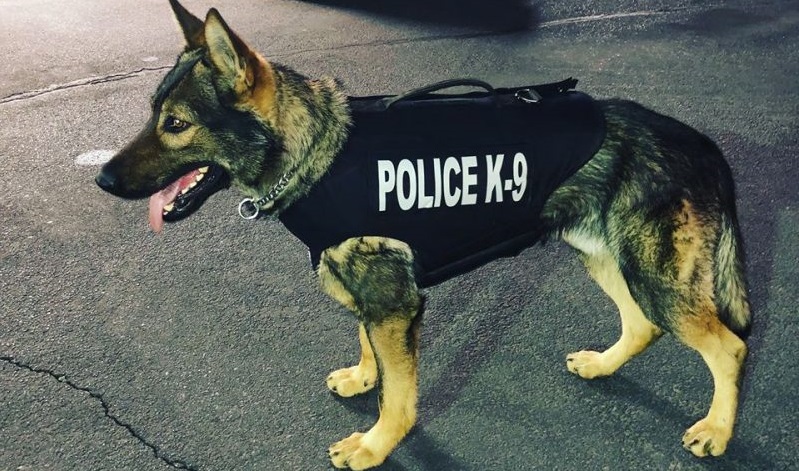
Who is getting expanded emergency medical care benefits, ballistics vests from fund-raising efforts, legislative protection, and love and respect from nearly everyone? No, not the DARE officer, but the furry cops in the K-9 corps.
With 23 K9 line of duty deaths over the last twelve months, 50,000 police dogs are engaged in dangerous and valuable work across the USA. Varying in tasks from apprehension, public relations, sniffing out narcotics, locating dead bodies, looking for bombs, tracking lost children or escaped prisoners, the K9s and their dedicated handlers prove their value daily. At a cost of from $5,000 to $20,000 to obtain and train, police agency managers can’t assume that they can afford a K9 unit.
Complicating the operation of a K9 unit is the cost of the handler. Because of the unique relationship that is developed in the team, the human asset creates costs as well. Despite common belief, a dog can change handlers, but that transition doesn’t always go well, so the retention and care of the K9 team is part of the total investment. With feeding, housing, ongoing training, and veterinarian costs, the availability of the team can be limited. Add that to the handler’s days off and the police manager recognizes that the number of hours on patrol or assignment will be reduced by those factors. This can limit the option of having a K9 unit for small agencies.
Another limit on K9 use is that, while many dogs are cross-trained, they do have limitations. An explosives detection dog, for example, must alert calmly with minimum movement, such as sitting, to avoid causing ignition of a suspicious device. This obviously differs from a tracking dog’s alert to a scent. Because of the legality of marijuana possession in many states, narcotics detection dogs that were trained to include marijuana in their searches, many drug-detecting dogs have been forced into retirement from that duty. Many agencies still retain marijuana sniffing dogs because of the continued illegal smuggling of black-market marijuana.
Tracking dogs and cadaver dogs are asked to cover large areas with their noses near the ground. The physical strain on the dog’s olfactory senses, along with the excitement that working dogs generate when on the job, they require limited work periods and appropriate work breaks. An agency will get five to eight years of service from a police dog. Many handlers adopt the retired dogs to their family, but others are rescued.
Handlers must be very well trained in search and seizure law. The general rule is that there is no expectation of privacy of the air around us or our car, but the length of a detention and K9 sniff can be attacked at trial if a stop extends beyond a reasonable time. A K9 team may be too far away in some circumstances. Use of force comes into play as well for those animals used for apprehension work. A bite must be justified like any other use of force. The handler and the department may be held liable for injuries.
A variety of breeds are found in police dogs from the classic German shepherd to the low-slung beagle. While you may find the former patrolling a perimeter at a corrections facility, you’ll find the stout beagle sniffing around airports for unlawful imports of fruits, meats, and vegetables that threaten the health of people and crops in the US.
A new use for dogs is as emotional support animals in police stations or during extended emergency duty at command posts. These critters’ job is to be petted and act as a temporary companion to lighten and brighten officers’ days.
Finally, in a futuristic twist, robotic dogs are being introduced to law enforcement agencies to engage in search and hostage situations to look, via remote camera, for people and explosives. With the ability to navigate terrain, the robotic Rover can keep humans out of harm’s way while transporting messages, video images, or packages. An experiment with “Digidog”, a robot K9 tried out by the New York City Police Department, was removed from their inventory after social media backlash. The skeletal dog-like design was deemed “too creepy” for NYPD after social media criticism following a demonstration of the multiple talents of the machine.
Police K9s are revered partners of value across the country, ready to take a bite out of crime.